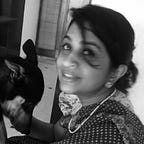‘Mahmud And Ayaz’ Is A Love Story Unlike Any Other
[First published in YouthKiAwaaz]
“Ajmal Kasab was hanged in Pune’s Yerwada Jail on 21 November 2012. Mahmud Fakhar was on the lawns of Bombay University, studying for his IAS prelims, when he heard the news of the hanging on a student’s mobile phone. The hanging pained him, it made him angry. He saw it as yet. Another instance of the persecution of Muslims by Hindu India.”
With these opening words R. Raj Rao draws you into ‘Mahmud and Ayaz’, the novel which tells the story of the slightly radicalised Mahmud Fakhar and his unlikely love story with a homeless Hindu lad. Mahmud, as the book says, “…. was born in Bombay in 1989. The year of Mahmud’s birth, as the author reminds us, was “a tumultuous one for Indian Muslims. Islamic separatism began in Jammu and Kashmir that year…. (it also) coincided with L.K. Advani’s Rath Yatra, which would culminate in the demolition of the Babri Mosque in Ayodhya.” Given the environment he grew up in, it is no wonder that Mahmud grew up with the seeds of hatred and discontent in his brain.”
The author describes this gradual but growing radicalisation of youth by contrasting Mahmud’s attitude towards Hindus with that of his father. “..the Fakhars had Hindu acquaintances. One of them was responsible for saving Mahmud’s mother‘s life during her third pregnancy by taking her to a hospital to be attended by qualified doctors. These acquaintances regularly brought sweets to the Fakhar residence during Dussera and Diwali, obliging the latter to carry kheer to this house on Eid.” Unlike his father, Mahmud was less willing to live in harmony. Despite Ajmal Kasab being caught on camera threatening innocents with a weapon, Mahmud continues to think he was punished unjustly.
Mahmud is also an example of a young man who was given a good education by working class parents who wanted him to have a better life than they did. However, he chooses to remain financially dependent on his family, and even gets married and has children while still a student. When he loses his entire family- mother, father, wife and two children- in an unfortunate accident, Mahmud is left alone, because even his married sisters do not want to have anything to do with him. When he fails clearing his last attempt at the civil service entrance exam, he enrols for a PhD and gets a job as a lecturer of history.
Mahmud chooses to do his PhD on his namesake, Sultan Mahmud of Ghazni. The choice is not coincidental- by now, Mahmud has realised that he is homosexual, and he is fascinated by the legendary love story between Mahmud and his Turkish slave, Ayaz. When he meets a homeless but handsome Hindu youth, he hires him as a domestic servant, and they soon become lovers. Mahmud gets the illegitimate son of a tamasha dancer converted to Islam, renames him Ayaz and begins a love affair with him.
The contemporary love story set in Mumbai closely parallels that of their historical namesakes, Mahmud and Ayaz. Mahmud and Ayaz travel to Somnath where in his own way, he loots the Somnath temple. This entry into crime draws Mahmud and Ayaz deeper into the underworld and they end up with a separatist group.
Along the way, the book meanders throw many of the definitive events of the last two decades — the Mumbai terror attack, the Nirbhaya rape, decriminalising homosexuality, demonitisation, growing cow vigilantism, Pulwama and Balakot, the abrogation of Article 370, the CAA protests, the lockdown and its aftermath. Each of these is told through the perspective of Mahmud, which is often very different from our own.
The author also calls out the hypocrisy present in many people. Mahmud is a devout Muslim who has deep sympathy with Islamic causes. Even though he calls his lover his “slave”, he wants him to convert to Islam. Yet, as he muses in a poignant passage, “…the realisation induced conflict in his mind. What was Islam’s stand on homosexuality? Some clearly say that Islam condemned homosexual sexuality in no uncertain terms. Others argue that there was a historical acceptance of homosexual sexuality in Arabic society which dated back to the previous Islamic period. So what was the truth? He couldn’t be sure. He was confused and he did not like being confused.” Through this passage, the author highlights the hypocrisy present in many people who choose to follow the scriptures, but only as long as it is convenient to them.
Throughout the book, the author doesn’t make excuses for anybody. In his own way, he calls out radicalism and bigotry at every point. The book is subversive and provocative. There are passages that can be labelled Islamophobic and passages that can be called Islamophilic- neither label is true. While the author appears to be rude, or funny, he is actually being honest. He says it as he sees it, and it is this intrinsic integrity that is the hallmark of the book.
The book finally begins where it ends- in the area of Bombay where Mahmud was born. An area that the author describes as-
“If there was a Pakistan in India, it probably existed not in Kashmir or Lucknow or Hyderabad or Aligarh, but within the radius that stretched from the filigreed, latticed Hajjj House in South Bombay to the Byculla Bridge in central Bombay. Here the density of Muslims per square kilometer exceeded that in Karachi and Lahore.”
Mahmud of Ghazni died with his devoted slave at his bedside. At the end of all their adventures, the contemporary Mahmud and Ayaz are together, with the “slave” taking care of his “master”. It is a love story. It is a history of present day India. It is a book unlike any other you will read.
This book has been published by Speaking Tiger. I recieved a review copy and my review was posted in YouthKiAwaaz.
